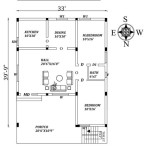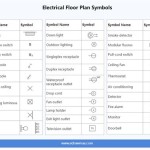Can You Build a House In Your Garden Without Planning Permission?
The idea of building a separate dwelling in one's garden is an appealing prospect for many homeowners. It could provide accommodation for family members, generate rental income, or simply increase the property's overall value. However, the question of whether such a project can be undertaken without planning permission is complex and hinges on a variety of factors. This article will delve into the circumstances where building in a garden might be permissible under permitted development rights, and the potential pitfalls and regulatory hurdles that homeowners should be aware of.
Planning permission is generally required for any new building or significant alteration to an existing one. Its purpose is to ensure that developments comply with local and national planning policies, protecting the environment, preserving the character of an area, and ensuring adequate infrastructure is in place. Bypassing this process carries the risk of enforcement action by the local planning authority, including the possibility of demolition orders.
Permitted development rights, on the other hand, offer a route to undertake certain building projects without the need for a full planning application. These rights are granted by Parliament and are set out in the Town and Country Planning (General Permitted Development) (England) Order 2015 (as amended). However, permitted development rights are not absolute and are subject to various limitations and conditions. Understanding these limitations is crucial before embarking on any building project in a garden.
Understanding Permitted Development Rights and Outbuildings
Permitted development rights allow for the construction of "outbuildings" within the curtilage of a dwelling house, subject to certain restrictions. The term "outbuilding" is broad and can encompass structures such as sheds, garages, summerhouses, and, potentially, small ancillary accommodations. However, there are several key criteria that must be met for a structure to qualify as permitted development.
Firstly, the outbuilding must be "incidental" to the enjoyment of the main dwelling house. This means that its primary purpose should be related to the use and enjoyment of the house, such as storage, hobbies, or recreation. If the intended use is independent residential accommodation – a self-contained unit with its own kitchen, bathroom, and living area – it is highly unlikely to be considered incidental and will almost certainly require planning permission. Local planning authorities will scrutinize the proposed use to determine whether it genuinely serves the main dwelling or constitutes a separate, independent residential unit.
Secondly, the size and height of the outbuilding are strictly regulated. For example, outbuildings in the rear garden cannot cover more than 50% of the area of land around the "original house." The "original house" refers to the dwelling as it existed on 1 July 1948 (or, if built after that date, as it was first built). Furthermore, outbuildings must not exceed certain height restrictions, which vary depending on their proximity to the boundary. For example, if the outbuilding is within 2 meters of the boundary, the maximum eaves height is 2.5 meters. The maximum overall height depends on the roof type. For a flat roof, the maximum height is 3 meters, while for a pitched roof, it is 4 meters.
Thirdly, the location of the outbuilding is important. Outbuildings are generally not permitted development forward of the principal elevation of the original house. This means that you cannot build an outbuilding in the front garden without planning permission. There are also restrictions on outbuildings in conservation areas, areas of outstanding natural beauty, and other designated areas. In these areas, permitted development rights may be more restricted or even withdrawn altogether. It is crucial to check with the local planning authority to determine whether any Article 4 directions are in place, which remove or restrict permitted development rights in specific areas.
Finally, the outbuilding cannot be used as a dwelling house. This is perhaps the most crucial point. If the outbuilding is designed or intended to be used as a separate, self-contained residential unit, it will almost certainly require planning permission. Even if the outbuilding technically complies with the size and height restrictions for permitted development, the local planning authority is likely to consider its intended use when determining whether planning permission is required. The inclusion of kitchen and bathroom facilities, along with a separate entrance, will strongly suggest that the outbuilding is intended to be used as a dwelling house.
Circumstances Where Planning Permission is Almost Always Required
Certain situations almost invariably necessitate planning permission for building in a garden. These include:
Independent Residential Unit: As previously mentioned, constructing a self-contained unit with its own kitchen, bathroom, and living area will almost always require planning permission. Local planning authorities will likely view this as a separate dwelling house, regardless of its size or appearance.
Change of Use: Even if an existing outbuilding was originally constructed under permitted development rights, a material change of use to a dwelling house will require planning permission. For example, converting an existing garage or shed into a self-contained living space will necessitate a planning application.
Restricted Areas: Properties located in conservation areas, areas of outstanding natural beauty, National Parks, or World Heritage Sites often have more restrictive permitted development rights. In these areas, even relatively minor building works may require planning permission. It is essential to consult with the local planning authority to determine the extent of permitted development rights in these areas.
Article 4 Directions: Local planning authorities can issue Article 4 directions, which remove or restrict permitted development rights in specific areas. These directions are typically used to protect the character and appearance of an area. If an Article 4 direction is in place, even seemingly minor building works may require planning permission.
Breach of Permitted Development Conditions: Even if a project initially fell within permitted development rights, if it fails to comply with the conditions attached to those rights, planning permission will be required. This could include exceeding height or size restrictions, or failing to comply with boundary regulations.
Navigating the Planning Process and Minimising Risks
Given the complexities surrounding permitted development rights and the potential for misunderstandings, it is advisable to take several steps to minimise the risk of enforcement action and ensure compliance with planning regulations.
Consult with the Local Planning Authority: The most important step is to consult with the local planning authority before commencing any building work. This can be done through a pre-application advice service. While this service may incur a fee, it can provide valuable guidance on whether planning permission is required and the likelihood of obtaining permission if an application is necessary. The planning officer can review your proposals and provide feedback on their compliance with local and national planning policies.
Obtain a Certificate of Lawfulness: A Certificate of Lawfulness is a formal confirmation from the local planning authority that a proposed development is lawful. This certificate provides peace of mind that the development is permitted development and does not require planning permission. Applying for a Certificate of Lawfulness involves submitting detailed plans and supporting information to the local planning authority. While the application process can be time-consuming, it provides a legally binding confirmation that the development is lawful, protecting against potential enforcement action in the future.
Engage a Planning Consultant: A planning consultant can provide expert advice on planning regulations and the likelihood of obtaining planning permission. They can also help with the preparation of planning applications and supporting documents. A planning consultant can navigate the complex planning system and advocate on your behalf with the local planning authority. Their expertise can significantly increase the chances of obtaining planning permission and avoiding costly mistakes.
Careful Design and Layout: The design and layout of the proposed building can significantly impact the likelihood of obtaining planning permission. Careful consideration should be given to the scale, appearance, and location of the building. It is important to ensure that the building is in keeping with the character of the surrounding area and does not have an adverse impact on neighbouring properties. The building should also be designed to minimise its visual impact and preserve existing trees and landscaping.
Consider Neighbouring Properties: The impact of the proposed building on neighbouring properties is a key consideration in the planning process. It is important to consider the potential impact on daylight, sunlight, and privacy. The building should be designed to minimise any adverse impact on neighbouring properties and to avoid causing unreasonable disturbance. It is also advisable to discuss the proposals with neighbours before submitting a planning application, as their feedback can be valuable in addressing any concerns and improving the design.
Building a house in your garden without planning permission is possible under very specific circumstances, primarily when it qualifies as an outbuilding under permitted development rights. However, the restrictions and conditions attached to these rights are numerous and complex. It is essential to thoroughly understand these regulations and to seek professional advice if necessary. Failing to comply with planning regulations can result in enforcement action, including the requirement to demolish the building. Therefore, careful planning and consultation with the local planning authority are crucial steps to ensure a successful and lawful building project.

Do You Need To Apply For Planning Permission Garden Office Guide

Planning Advice How To Build A Summerhouse In Your Garden Without Consents Or Complaints From The Neighbours Homes And Property Standard

Outbuildings Outside Space Do I Need Planning Permission

Can I Build A Garden Room Without Planning Permission Essential Gui For Homeowners Office Buildings

Do I Need Planning Permission For A Wooden Garden Shed

Garden Room And Summer House Planning Permission

Planning Permission For Garden Rooms In Gardenrooms Ie

Decision Made On Garden Building Without Planning Permission At New Homes Lancslive

Building Without Planning Permission What You Need To Know Property Advice

A Guide To Planning Permission For Garden Rooms Everything You Need Know Nordic Buildings








